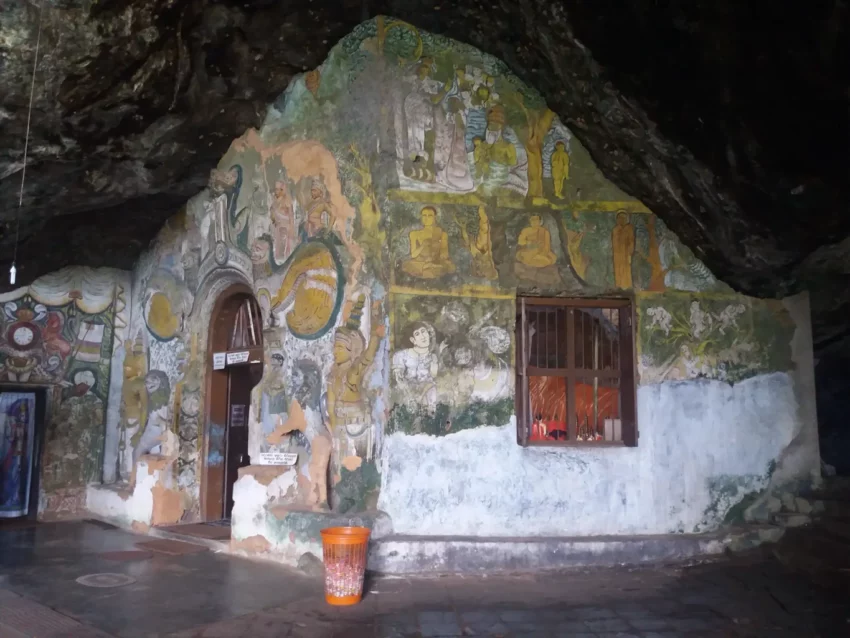Get your dose of History via Email
The Historical Overview of Batatotalena Cave
The Batatotalena Cave, also known as the Diva Guhava in Buddhist literature, is situated in the Ratnapura district of Sri Lanka. It holds substantial significance due to the archaeological findings that suggest human habitation dating back to the Late Pleistocene epoch. This cave is part of a network of ancient caves that have provided critical insights into the prehistoric life in the region.
Archaeological Findings in the Batatotalena Cave
Exploration and excavation of the Batatotalena Cave have unearthed numerous artifacts that shed light on the behaviors and practices of early humans. Among these finds are microlith tools typical of Balangoda Man, a prehistoric human who lived in the region. These tools are essential in understanding the technological advances of homo sapiens during the late Pleistocene era in South Asia. Notably, the findings corroborate the versatile use of stone implements, ranging from hunting weapons to cutting and scraping devices.
Additionally, researchers uncovered skeletal remains within the cave that are radiocarbon dated to approximately 30,000 to 9,000 years ago. The significance of these findings speaks to the continuity of human habitation and provides invaluable evidence for the study of early human populations in South Asia. The osteological analysis of the remains contributes to the broader knowledge of the physical anthropology of prehistoric humans.
One of the most noteworthy artifacts discovered in the cave is a Balangoda human skeletal fossil, indicating the presence of anatomically modern humans during this era. The discovery of such ancient human remains within this cave and the general area underscores the importance of the site in unraveling the chronology and behavior patterns of early humans in Sri Lanka.
The Cultural Importance of Batatotalena Cave
Beyond the paleontological and archaeological riches of the Batatotalena Cave, there is a strong cultural and religious association with the site. According to Buddhist tradition, this cave is identified as a place of occasional habitation by the Buddha on one of his visits to Sri Lanka. The rock inscription found near the cave belonging to the 1st century AD further indicates the ancient cultural ties the site has with Buddhism’s history on the island. The inscription is an invocation of blessings upon the nun who resided at Batatotalena during that time, reflecting the long history of monastic activities connected to the site.
The religious significance of Batatotalena Cave continued into the medieval period, with evidence indicating that it was used as a Buddhist monastic retreat. This uninterrupted spiritual association with Buddhism, from ancient times to the present day, is evocative of the enduring cultural landscape this site represents.
Environmental Characteristics and Conservation
The cave is located at an elevation of approximately 400 meters above sea level atop a 150-meter-high rock formation. The verdant and thriving surroundings, combined with the cave’s high altitude, make it an idyllic setting for prehistoric human occupation and later, religious solitude. The preservation of the cave’s environment is crucial, as it is integral not only to Sri Lanka’s natural heritage but also for safeguarding the archaeological integrity of the site for future study.
Despite its remarkable historical and archaeological importance, Batatotalena Cave faces challenges. Environmental degradation and the impact of increasing tourism pose potential threats to its conservation. It is vital to maintain a balance between tourism, which brings recognition and resources to the site, and the preservation measures that protect its unique historical legacy.
Conclusion
Batatotalena Cave serves as a capsule of human history, containing a wealth of archaeological artifacts that enlighten us about the prehistoric occupants of Sri Lanka. The cultural narrative attached to the cave through its association with Buddhism adds another layer to its significance. For researchers and scholars, Batatotalena Cave is not just a natural formation but an indelible mark of human endurance, adaptability, and spirituality that has persisted through millennia.
Sources:

